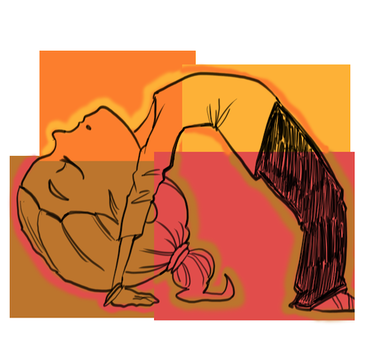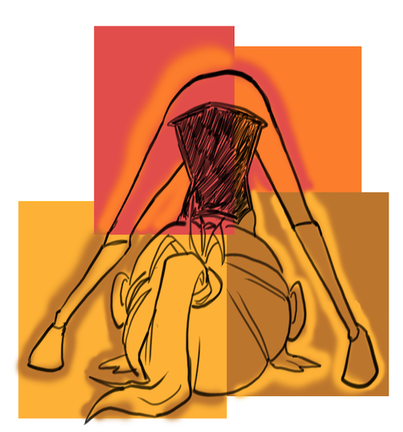|
Not only is that true on Stranger Things, the Netflix series that has me feeling so nostalgic for my American, suburban childhood and Christmases, but it's also true when we invert our relationship to gravity. There are very few goals I set for myself, not because I'm not ambitious, or because I'm not motivated. It's because for me, if I set a goal, I have typically found a way to reach it - regardless of how it suits my emotional and physical health. In my twenties, it seemed like a totally logical and good idea to trek the 40 miles of the Maryland section of the Appalachian Trial in one day. And to get up at 4:30 am to go for a run to beat the summer Washington, DC humidity. Now, in my late thirties, I realize that my body is different every single day, and I want to listen to it more. Now, I seek out ways to balance myself, my life, and my day-to-day emotional state. Goals sometimes hinder my own bodymind connection. This all may sound counterintuitive. But so is floating in a bridge with the Wunda Chair. Really, Stephanie? you want me to push DOWN on the pedal to float UP?
inversion today already. Woke up this morning and reached for your toes? Inversion! Picked up your shoes off the floor? Inversion! Dropped that piece of onion on the floor while chopping it up for the green curry paste you're making? Inversion inversion inversion! I've always enjoyed inversions, possibly because I grew up doing them. In fact, we all probably did as kids on the playground or doing cartwheels in our front yard. I was a competitive gymnast so most of my week was dedicated to inversions of all kinds - handstands, back-walk-overs, front tucks, giants, front handsprings, round-offs - and that's mostly the warm-up. In college, I discovered how much I loved modern dance because of one adjunct professor whose entire class was made up of different kinds of floor work and handstands. It. Was. Awesome. And revolutionary for me too as a gymnast-turned-dancer. You mean, we can go upside down in dance too? Then, as a professional dancer in DC, when the choreographer I was working with was away in India for over a month, I discovered yoga as a way train and keep in shape. I took a class with a substitute Iyengar teacher who focused on inversions, headstands and handstands, specifically, at the end of class, and I will never forget what he said: 1) inversions make us happy because of the rush of blood to the head; and 2) shoulder stands - another inversion kinda like jackknife in today's Pilates workout where you balance on the back of your head and shoulders - helps to stimulate the thyroid, which helps with metabolism. Huh. Turns out the benefits of inversions aren't just anecdotal. Think about it - we're 80% water, so we are hugely sensitive to the fluctuations in the force of gravity that bears down on us every single moment of every single day. By inverting our relationship to that force, says David Coulter PhD, who taught anatomy for 18 years at the University of Minnesota, if we can remain in an inverted position for 3 to 5 minutes, blood will drain quickly to our heart (which is a good thing) and tissue fluids will flow more efficiently to our veins and lymph channels of our lower extremities, basically creating a more fluid (ha! get it?) exchange of nutrients-in-and-waste-out.
0 Comments
Leave a Reply. |
Authori'm stephanie. my last names mean "hedgehog" in Czech and "pretty calf" in French. i have an MA from Oxford in English lit, and a MFA from Riverside in experimental choreography. i like to write. i have lots of thoughts on the body. and i want to help you understand your own better. oh, i'm also plant-based and love to bake with vegan ingredients. |



 RSS Feed
RSS Feed